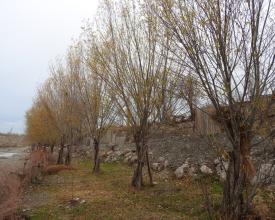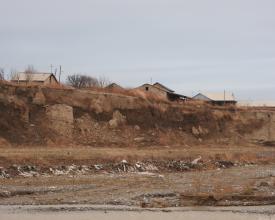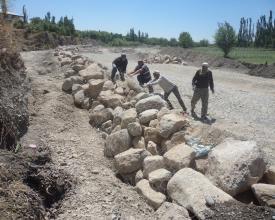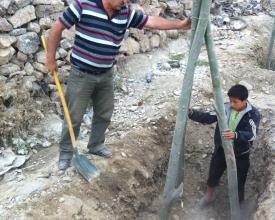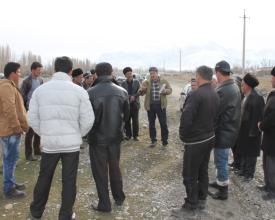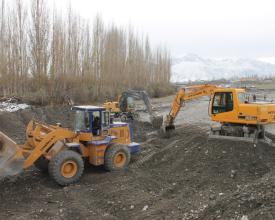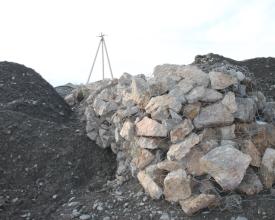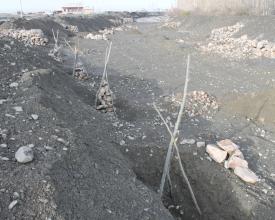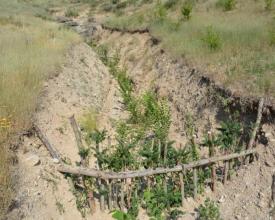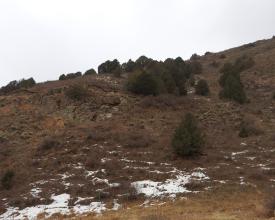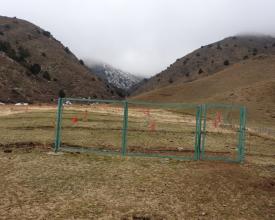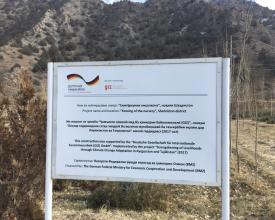
Reducción integrada del riesgo de catástrofes en las zonas afectadas por inundaciones
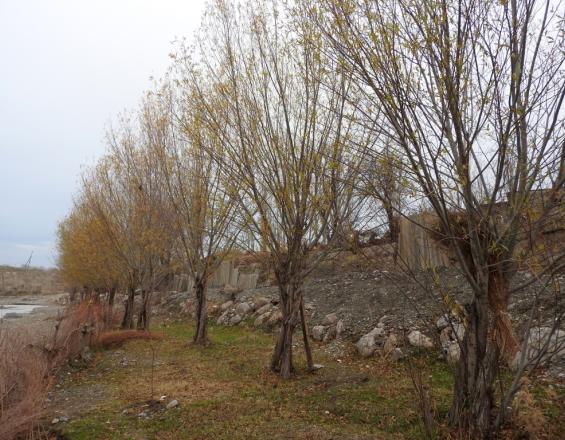
Los pueblos y las tierras más productivas de las partes bajas de la cordillera del Turkestán están situados en los valles de ríos y arroyos. La descarga de agua de los arroyos es estacionalmente muy variable. Después de las lluvias y durante el deshielo se producen flujos extremos que superan varias veces la media de la estación húmeda, lo que provoca el transporte de grandes cantidades de escombros. Estos flujos de escombros pueden ser mucho más destructivos que las crecidas ordinarias. La población local informa de episodios de inundaciones repentinas y flujos de escombros hasta ahora desconocidos, que pueden atribuirse a la degradación del suelo en las zonas altas de las cuencas en combinación con los efectos del cambio climático.
La solución reunió al Comité de Situaciones de Emergencia, las comunidades locales afectadas y la empresa forestal. Con la ayuda de expertos proporcionados por el proyecto, se analizó la situación, se identificaron los riesgos y se planificaron intervenciones integradas. Estas intervenciones consistieron en medidas verdes y grises y se aplicaron conjuntamente.
Contexto
Défis à relever
Las comunidades carecían de los conocimientos técnicos y las capacidades necesarias, así como de los medios financieros para aplicar la solución por sí mismas. Además, el Comité de Situaciones de Emergencia carecía de recursos financieros para apoyar a las comunidades. La GIZ aportó conocimientos técnicos, maquinaria y material de construcción, mientras que las comunidades contribuyeron con trabajo voluntario.
Los árboles plantados corren el riesgo de ser dañados por el ganado en libertad. Por eso hubo que vallarlos o protegerlos individualmente.
Ubicación
Procesar
Resumen del proceso
Los componentes básicos representan tres elementos diferentes
- el enfoque participativo general, que garantiza los mejores beneficios locales, la apropiación por parte de la población local, su compromiso y, por tanto, la sostenibilidad de las medidas aplicadas;
- los elementos técnicos clave, que garantizan la eficacia de la reducción del riesgo de catástrofes, así como su sostenibilidad; y
- la colaboración con un actor clave, como ejemplo, de implicación de diferentes partes interesadas, más allá de la zona inmediata del riesgo de catástrofe.
El proyecto de la GIZ garantizó la interacción de los tres componentes básicos y se espera que esta interacción funcione más allá de la duración del proyecto y se reproduzca.
Bloques de construcción
Participación de la comunidad en la planificación, construcción y mantenimiento
A menudo, las medidas de reducción del riesgo de catástrofes no responden eficazmente a las necesidades de la población afectada o no son sostenibles a largo plazo. Esto puede deberse a la insuficiente participación de la población local en la planificación, construcción y mantenimiento de dichas medidas. Las personas afectadas no se sienten suficientemente responsables y esperan que las organizaciones que han construido las medidas también se ocupen de ellas.
La participación de las comunidades locales en la planificación garantizó la integración de sus conocimientos y la atención a sus necesidades y preocupaciones. Se implicaron en los trabajos de construcción e hicieron contribuciones sustanciales en forma de trabajo comunitario voluntario (el llamado hashar) y materiales disponibles localmente. Las comunidades, en un proceso informal de selección social, identificaron a las personas con la capacidad técnica y social adecuada y las nombraron responsables del mantenimiento futuro. En caso necesario, convocarán a la comunidad para realizar trabajos conjuntos.
Las personas encargadas de cuidar las medidas de protección obtienen como recompensa el derecho a utilizar el combustible y el forraje producidos por la vegetación protectora.
Factores facilitadores
La tradición del trabajo comunitario voluntario (el llamado hashar) fue un importante factor facilitador. En un hashar la gente trabaja conjuntamente en un proyecto individual o comunitario y los beneficiarios les proporcionan alimentos.
El acceso a beneficios especiales en forma de leña y forraje estimuló además a la gente a asumir responsabilidades a largo plazo. Las demás personas ven este derecho a utilizar determinados recursos como una recompensa legítima por asumir la responsabilidad de las estructuras de protección.
Lección aprendida
Para el éxito y la sostenibilidad a largo plazo es crucial implicar a la comunidad en todas las fases, desde la planificación hasta el mantenimiento, pasando por la ejecución. La forma más eficaz es identificar a personas con gran motivación e interés, que puedan actuar como iniciadores e impulsores del proceso y movilizar a otros miembros de la comunidad.
Combinación de tecnologías verdes y grises
La gestión del riesgo de catástrofes puede consistir en construcciones protectoras de piedra, hormigón y hierro ("grises") y en el uso de vegetación protectora ("verdes"). La combinación de ambas tiene varias ventajas. Las medidas verdes pueden necesitar varios años antes de ser efectivas. Al mismo tiempo, las medidas grises pueden perder estabilidad con el tiempo, por ejemplo si los cables de los gaviones se corroen o los muros son arrastrados por la corriente de agua. Los árboles bien mantenidos, sin embargo, pueden servir potencialmente para siempre.
La solución incluía la combinación de medidas verdes y grises en diversas formas. Se remodelaron los cauces y se instalaron gaviones para una protección inmediata. Se plantaron árboles, en particular en forma de trípodes de ramas de sauce, reforzados con piedras. Proporcionarán protección a largo plazo.
En una cuenca superior, por encima de un lugar afectado por un flujo de detritos, se bloquearon barrancos con ramas y piedras y se plantaron árboles para estabilizarlos y evitar una mayor erosión. En el lugar de acumulación, los árboles con riego por goteo y protegidos por una valla temporal hacen que la tierra vuelva a ser utilizable y fértil y proporcionarán cierta protección a las tierras situadas más abajo contra futuros flujos de escombros.
Factores facilitadores
Entre los factores favorables cabe citar la disponibilidad de conocimientos y experiencia en ingeniería proporcionados por la GIZ y el correspondiente suministro de maquinaria y materiales. Estos factores se combinaron con la disposición de la población local a contribuir con su trabajo y los materiales disponibles localmente.
Lección aprendida
La combinación de medidas grises y verdes puede aumentar la rentabilidad de las medidas de reducción del riesgo de catástrofes. El uso de especies arbóreas naturales estabiliza o restablece la vegetación natural y aprovecha los servicios ecosistémicos.
Las medidas verdes pueden verse afectadas por el ganado en libertad o mal pastoreado. Por lo tanto, el vallado temporal, la protección individual de los árboles y una buena implicación de la comunidad local son esenciales para el éxito.
Colaboración con empresas forestales
Las tierras donde el riesgo de catástrofe es más crítico suelen estar situadas aguas abajo y no pertenecen a la empresa forestal. Las zonas en las que se originan las crecidas repentinas y los flujos de detritos son las cuencas altas situadas aguas arriba. Muchas de estas zonas están gestionadas por la empresa forestal. Por lo tanto, su participación es crucial.
La empresa forestal pretende mejorar la gestión de las cuencas altas mediante la regulación del pastoreo, la prevención de la deforestación y las actividades de reforestación.
Además, en el caso de la solución, la empresa forestal ofreció tierras en arrendamiento a los miembros de la comunidad interesados, que rehabilitarían las tierras, plantarían árboles y cultivarían forraje para su ganado, evitando al mismo tiempo el pastoreo excesivo y la destrucción de la vegetación.
Factores facilitadores
El factor facilitador clave es la colaboración entre la empresa forestal y los usuarios locales de la tierra, incluidos los acuerdos de arrendamiento, que aportan claros beneficios a los usuarios.
La empresa forestal de Shahriston tiene una larga experiencia en la propagación de enebros autóctonos y en la rehabilitación con éxito de bosques de enebros utilizando estas plántulas. Con la ayuda de la GIZ, se valló el vivero forestal para evitar daños causados por el ganado en libertad y aumentar la producción de plántulas de árboles autóctonos.
Lección aprendida
La colaboración requiere mecanismos claros y la consideración de los intereses de las distintas partes interesadas. Los usuarios de la tierra sólo están dispuestos a asumir la responsabilidad sobre las tierras forestales en caso de acuerdos claros que garanticen beneficios a largo plazo.
La empresa forestal experimenta en algunos casos un conflicto de intereses difícil de abordar. Gran parte de sus ingresos proceden de los permisos de pastoreo expedidos a los ganaderos que pastan su ganado en tierras forestales. Además, existe una presión social informal sobre la empresa forestal para que permita el acceso a un número cada vez mayor de cabezas de ganado. Esto entra en conflicto con la función de la empresa forestal de proteger los pastizales, bosques y selvas y sus servicios ecosistémicos. Mientras estos servicios ecosistémicos no estén suficientemente protegidos, se producirá una degradación de la tierra que aumentará el riesgo de catástrofes. Este problema es especialmente difícil de abordar en un contexto transfronterizo en el que la cuenca alta y los pueblos afectados se encuentran en jurisdicciones diferentes.
Impactos
Impactos medioambientales:
- prevención de la erosión intensiva no natural
- rehabilitación de la vegetación y creación de nuevos hábitats;
Impactos sociales:
- movilización del trabajo comunitario conjunto para hacer frente a los problemas y riesgos que afectan a la comunidad;
- colaboración entre los usuarios de la tierra, los dirigentes de la comunidad, el Comité de Situaciones de Emergencia y la empresa forestal;
- desarrollo de capacidades en forma de conocimientos y habilidades para aplicar diversas tecnologías para la rehabilitación de tierras, el uso sostenible de la tierra y la reducción del riesgo de desastres;
- prevención de desastres que causen la destrucción de viviendas, infraestructuras, tierras productivas y amenacen la vida y la salud de las personas.
Impactos económicos:
- Prevención de las pérdidas económicas causadas por inundaciones desastrosas;
- rehabilitación de las tierras afectadas
- creación de nuevas plantaciones de árboles productivos (frutas, leña).
Beneficiarios
Los beneficiarios son los hogares y las comunidades de las zonas de riesgo de catástrofe, así como las personas que cuidan de las medidas verdes y, a cambio, tienen derecho a utilizar los frutos y las ramas de los árboles, así como el forraje del lugar rehabilitado.
Objetivos de Desarrollo Sostenible
Historia
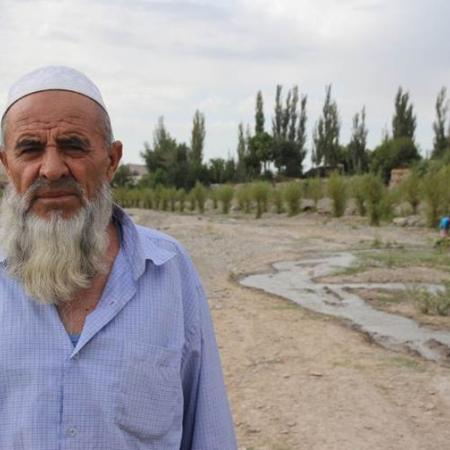
Desde hace años, Hoji Numonjon Aslonov, habitante de la aldea de Kurush, en el distrito de Spitamen, provincia de Sughd, ve cómo sus tierras son arrasadas por flujos de escombros procedentes de las montañas del vecino Kirguistán. Debido a las lluvias extremas y a las temperaturas inusualmente altas del verano, el riesgo se ha agravado en los últimos años. Sus casas y las de sus vecinos ya estaban directamente amenazadas cuando el Comité de Situaciones de Emergencia, junto con la GIZ, ayudó a la población local con asesoramiento técnico y materiales de construcción a levantar un muro de protección para sus casas.
En unos 30 días, los miembros de la comunidad, dirigidos por Hoji Numonjon Aslonov, construyeron un muro de protección de gaviones de 300 metros de largo. Además, la comunidad les proporcionó plantones de sauce, que plantaron a lo largo del muro, creando una protección adicional a largo plazo, que se fortalece con el tiempo.
El muro de protección ya ha resistido fuertes avalanchas de lodo varias veces desde entonces, lo que demuestra su resistencia y eficacia. Hoji Numonjon Aslonov cuida bien de los árboles, que ya han alcanzado un tamaño respetable y evitan que los cimientos del muro sean arrastrados por las aguas. Sintiéndose de nuevo a salvo y seguro, incluso ha empezado a utilizar la zona situada detrás del muro plantando árboles frutales como contribución adicional a sus medios de subsistencia.
